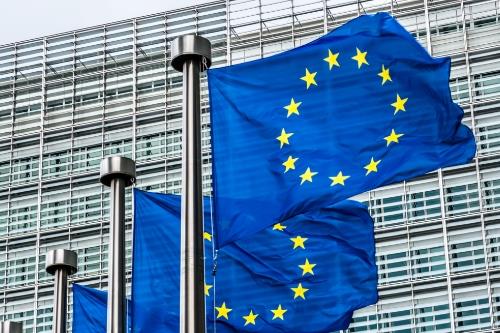EU Regulatory Activity
Achieving EU Climate, Strategic Autonomy, and Innovation Objectives Through Responsible Chemistry
 A regulatory process to potentially restrict the manufacture and use of per- and polyfluoroalkyl substances (PFAS) in the near future has been formally initiated in the European Union (EU). The regulation, as currently proposed, will have significant unintended consequences for the EU’s ability to realize its own sustainability targets, now and in the coming years.
A regulatory process to potentially restrict the manufacture and use of per- and polyfluoroalkyl substances (PFAS) in the near future has been formally initiated in the European Union (EU). The regulation, as currently proposed, will have significant unintended consequences for the EU’s ability to realize its own sustainability targets, now and in the coming years.
Not only would the proposed restriction potentially ban substances that have been proven safe for their intended uses, but it would also ban substances that are and will be critical for sectors that will drive our sustainable transformation. While regulators have suggested that some derogations will be made for important sectors and applications, the issue is that the entire regulatory framework, as proposed, does not consider future innovations in fluorinated chemistry that will be revolutionary for the green and digital transitions.
Chemours supports coherent regulatory approaches that allows for the use of safe, better performing chemistries in the EU and enable the sustainability of the EU industrial value chain.
Considering the overly broad proposed regulatory approach to the PFAS restriction, we maintain that fluoropolymers and fluorinated gases (f-gases), as subsets of PFAS chemicals, should be exempt due to their safety profiles, important applications in the EU economy, advances in existing regulatory frameworks, and the significant impact a restriction would have on numerous European industries. Not only from an economic standpoint, but also on industry’s ability to achieve EU climate, strategic autonomy, and innovation objectives. These include 2030 greenhouse gas (GHG) emissions reduction goals, as well as Green Deal initiatives, such as Smart and Sustainable Mobility, Renovation Wave, and the EU Hydrogen Strategy, as well as strategic autonomy goals in innovative sectors, such as ambitious semiconductor manufacturing targets.

Now that a PFAS restriction process has been formally initiated, we are committed to working with the appropriate, competent authorities to help fill any data gaps or to provide additional information about the safety and socio-economic value of fluoropolymers and f-gases. Furthermore, through collaborative industry engagement across the value chain, we are confident that a constructive regulatory outcome can be achieved for all stakeholders.
We also maintain that our approach to responsible manufacturing, including our Corporate Responsibility Commitment 2030 Goal to reduce air and water emissions of fluorinated organic compounds by 99% or more from a 2018 baseline at our manufacturing facilities worldwide, proves fluoropolymers and f-gases can be made and used safely, and handled responsibly across the entire life cycle of these chemicals.
F-Gas Regulation
The EU’s F-Gas Regulation was developed to protect the environment by managing and reducing emissions of fluorinated GHGs and was first adopted in 2006, before being revised in 2015. The F-Gas Regulation regulates hydrofluorocarbons (HFCs) and could extend to hydrofluoroolefins (HFOs) in the future.
 The regulation is currently being revised to align the Regulation with the European Green Deal and the Kigali Amendment to the Montreal Protocol, in the following ways:
The regulation is currently being revised to align the Regulation with the European Green Deal and the Kigali Amendment to the Montreal Protocol, in the following ways:
- A reduction of available HFCs on the market (phase down);
- Restriction of HFCs on the market (bans);
- Leakage prevention, checks, and end of life (containment);
- Further requirements on training and certification.
A proposal was published by the European Commission in April 2022, which sets out significant decreases in f-gases available on the EU market from 2024 onwards. The draft text from the Commission has to be discussed with the other EU institutions, the European Parliament, and the Council of the EU, before a final text can be agreed upon. The European Parliament concluded its examination process of the file, with a vote on a Parliament-wide position on the text, ahead of final negotiations with the European Commission and Council of the EU, expected later this year. The revised proposal is expected to be enacted in the first quarter of 2024.




